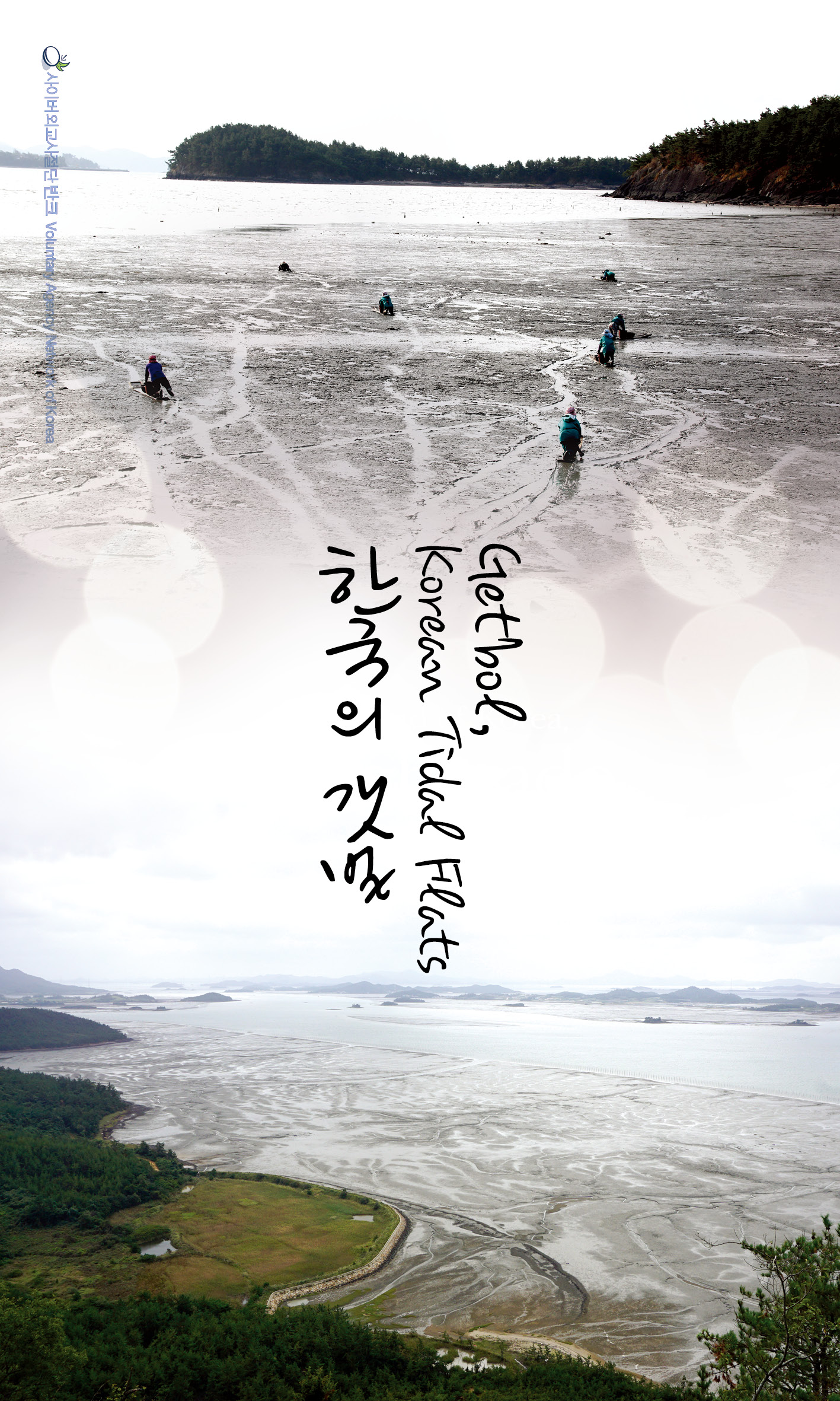 Getbol is widely situated on the western and southern coast of the Korean peninsula. Getbol is a flat area along the coast that is submerged at the flow and exposed at the ebb of each tide, which is a depositional landform created by fine soil carried by the tidal current for a long time.
Getbol is widely situated on the western and southern coast of the Korean peninsula. Getbol is a flat area along the coast that is submerged at the flow and exposed at the ebb of each tide, which is a depositional landform created by fine soil carried by the tidal current for a long time.
The size of Korean Getbol is 2,489㎢ and there are four most famous ones – Seocheon Getbol (Seocheon, Chungcheongnam-do), Gochang Getbol (Gochang, Jeollabuk-do), Shinan Getbol (Shinan, Jeollanam-do) and Boseong-Suncheon Getbol (Boseong and Suncheon, Jeollanam-do). Other than being a basic source of livelihood for Korean people, Getbol has also been a habitat for a number of species flora and fauna for a long time. The site hosts a total number of 2,150 species, including 118 of water birds, 857 of macrobenthos, 375 of benthic diatoms, 152 of marine algae, 55 of halophytes, 54 of fish, etc. Out of those, some species are endangered and some are Korean endemic. There are 22 species of water birds and 5 of marine invertebrates listed on the Red List of the International Union for Conservation of Nature (IUCN), and 47 endemic species including Tiger crab, and other rarities. In particular, Korean Getbol plays a role as an intermediate stop which is important for migratory birds traveling between East Asia and Oceania.
The value of Korean Getbol was little known in the past. However, it is now newly acknowledged with its various functions and high value. Korean Getbol is a valuable Korean heritage that has long been a base of livelihood for Koreans and a habitat for a great variety of species, and moreover, protects the global ecosystem today.